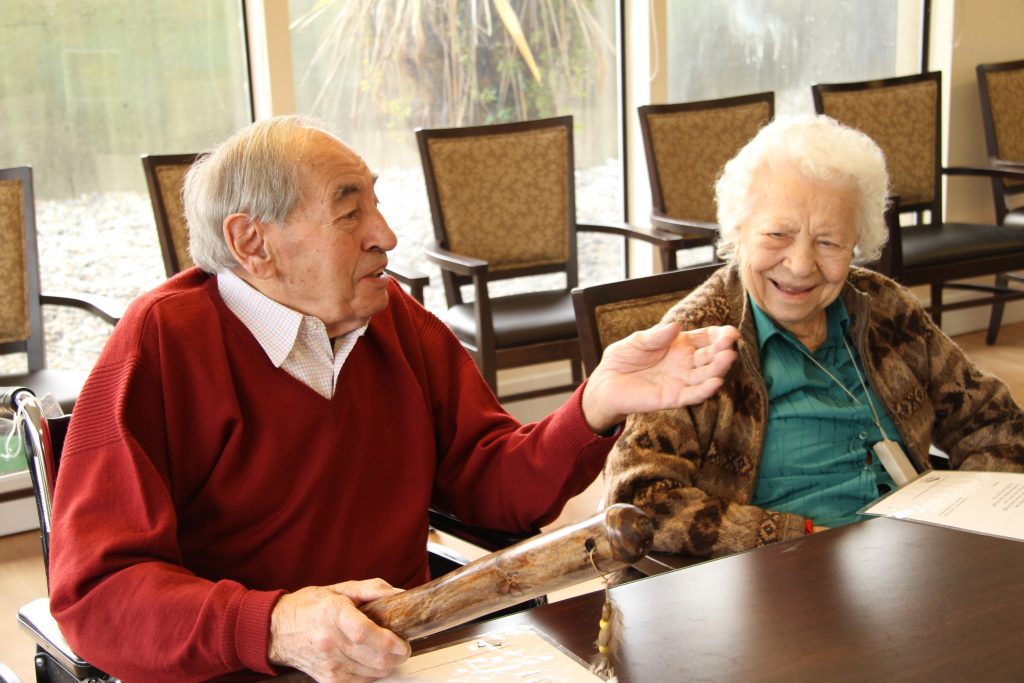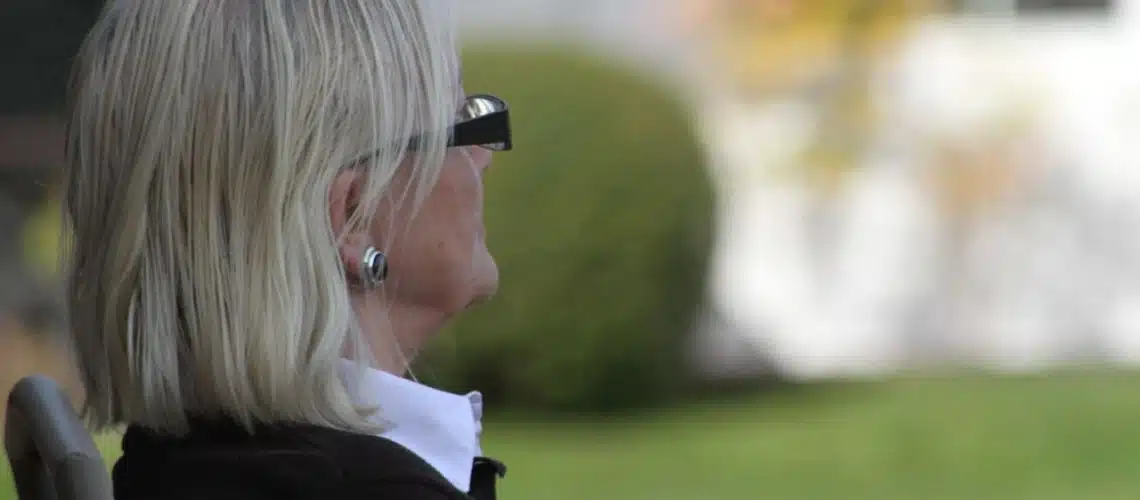By Kristine Theurer, PhD
“If it doesn’t help my bottom line, I’m not interested.”
I was having a brief chat at a conference with a CEO who operates 10 senior living homes, explaining how peer support and mentoring reduces loneliness and social isolation. I suggested a peer support program should be at the top of his priority list.
He looked at me sympathetically and said: “If it doesn’t help my bottom line, I’m not interested”, and walked away.
He had a valid point — CEOs are under tremendous pressures to improve the bottom line.
We know that a shocking $6.7 billion of Medicare costs are directly attributed to social isolation annually. 1 But does loneliness or social isolation impact the bottom line for a senior living operator, and if so how?
The Economics of Loneliness
In our research on implementing a peer support and mentoring model in senior living, we found a 15% reduction in loneliness, 30% decrease in depression and a 60% increase in activity engagement among those socially isolated.2
I think all would agree that reducing loneliness and social isolation is a good thing. But what does that mean in terms of “the bottom line”?
We drilled down and using a hypothetical home with 100 residents, we examined the 3 outcomes associated with above results: loneliness and dementia prevention, depression and falls, and the decrease in social isolation on well-being. Then we added up the numbers.
Even though there are many more benefits associated with reducing loneliness, such a depression, increased inflammation and early death,3 you might be surprised how these three add up over time in just one home.
1. Loneliness and the Prevention of Dementia: Cost Savings over 5 Years—$186,000
There is a causal relationship between loneliness and dementia. Older adults who feel chronically lonely have 2.5 increased odds of developing dementia,4 or in a more recent study, a 40% increased chance.5
People living with dementia increase staff burden as they require more help. Furthermore, dementia related responsive behaviours are a significant predictor of care-aide/CNA burnout, which leads to increased turnover and absenteeism.6-7
So, we did the math. In our study, 54% of residents were lonely at baseline and this changed to 33% at 6 months. Using an average of 100 residents in a home, the annual cost savings are estimated at $37,215.
This represents direct, un-reimbursed care costs, due to challenges with the ability to “make yourself understood”, for example, or “getting dressed”—these and other factors increase time of care. These types of costs make caring for a patient with dementia 1.2 times higher than someone without dementia8.
Over five years the estimated total direct costs come to $186,075 for one home.
But there’s more.
2. Depression and the Prevention of Falls: Cost Savings over 5 years
— $33,000
Loneliness and depression are linked and in our study depression scores were reduced by 30%.
Seniors who are depressed are more likely to fall. Between 45% and 61% of nursing home residents experience a fall each year.9
Residents who fall increase the burden of care and these costs go directly to the home.
Again, we did the math. Once we remove the 60% attributed to hospital costs8 , the savings are $6715 annually which over five years adds up to $33,575.
3. Social Isolation Prevention and Cost Savings over 5 years: $114,000
Social isolation costs on average $74.50 USD per resident/month in a skilled nursing facility.1 Social isolation negatively impacts mental health, health behaviours, physical health and mortality.
In our research, for example, we were able to demonstrate a 60% reduction in social isolation among residents participating in peer support and mentoring.
The math suggests a senior living home can save $22,778 on an annual basis as a result of reducing social isolation. Over five years that adds up to $113,890.
These three items add up to $66,708 cost savings per year for one home.
That CEO left $3 million on the table
If you add that up over five years, the cost savings of just these three items, comes to $333,000—for a single home.
Since the CEO I was speaking to operated 10 homes, he left an estimated savings of $3 million over 5 years on the table. It all adds up.
Of course, these are just the hard care costs associated with loneliness and social isolation of these three categories.

Our biggest loss attributable to isolation, may be our failure to tap into the wisdom, perspective and gifts the most experienced generation living on our planet have to give us and to one another.
Respectfully submitted, Dr. Kristine Theurer
References
1Flowers, L., Houser, A., Noel-Miller, C., Shaw, J., Bhattacharya, J., Schoemaker, L., & Farid, M. (2017). Medicare spends more on socially isolated older adults. Retrieved from https://www.aarp.org/ppi/info-2017/medicare-spends-more-on-socially-isolated-older-adults.html
2Theurer, K., Mortenson, W.B., Brown, S., Stone, R.I., Suto, M.J., Timonen, V. The impact of peer mentoring in residential care on those visited (abstract). In: IAGG World Congress of Gerontology and Geriatrics, 2017. Proceedings of the IAGG World Congress of Gerontology and Geriatric; San Francisco, California.
3United States Senate Special Committee on Aging. (2017, April 27). Aging without community: The consequences of isolation and loneliness (Committee hearing video). Retrieved March 10, 2018 from https://www.aging.senate.gov/hearings/aging-without-community-the-consequences-of-isolation-and-loneliness-
4Holwerda, T. J., Deeg, D. J. H., Beekman, A. T. F., van Tilburg, T. G., Stek, M. L., Jonker, C., & Schoevers, R. A. (2012). Feelings of loneliness, but not social isolation, predict dementia onset: results from the Amsterdam Study of the Elderly (AMSTEL). Journal of Neurology, Neurosurgery & Psychiatry. doi:10.1136/jnnp-2012-302755
6Chamberlain, S. A., Gruneir, A., Hobena, M., Squire, J. E., Cummings, G. G., & Estabrooks, C. A. (2017). Influence of organizational context on nursing home staff burnout: A cross-sectional survey of care aides in Western Canada. International Journal of Nursing Studies, 77, 60-69. doi:10.1016/j.ijnurstu.2017.02.024
7Castle, N. G., Engberg, J., & Men, A. (2007). Nursing home staff turnover: Impact on nursing home compare quality measures. The Gerontologist, 47(5), 650-661.
8Caravau, H., Martin, I. (2015). Direct costs of dementia in nursing homes. Frontiers of Aging Neuroscience, 28(7), 146. doi. 10.3389/fnagi.2015.001469Carroll, N. V., Delafuente, J. C., Cox, F. M., & Narayanan, S. (2008). Fall-related hospitalization and facility costs among residents of institutions providing long-term care. The Gerontologist, 48(2), 213-222
9Carroll, N. V., Delafuente, J. C., Cox, F. M., & Narayanan, S. (2008). Fall-related hospitalization and facility costs among residents of institutions providing long-term care. The Gerontologist, 48(2), 213-222


Unrefutable!